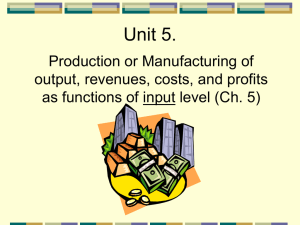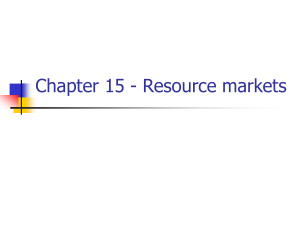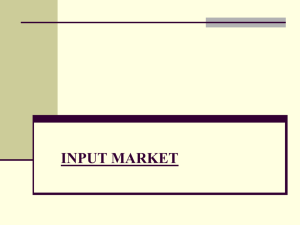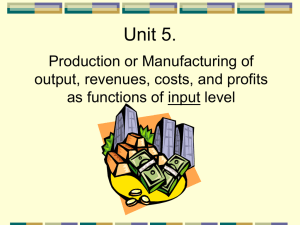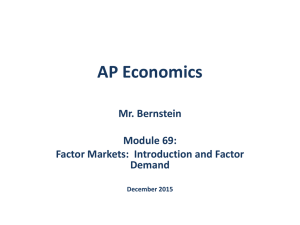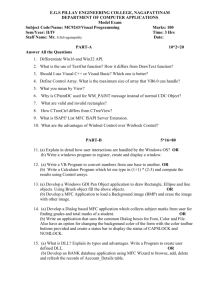Introduction to Labor Markets
advertisement
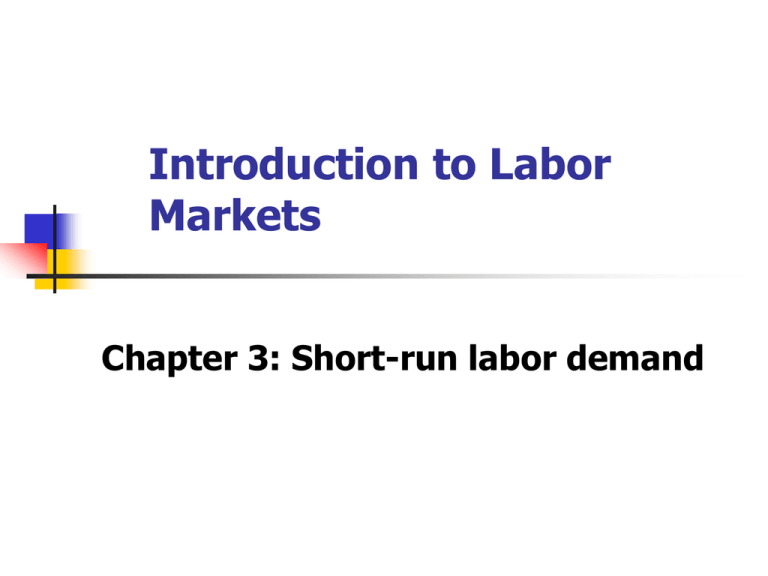
Introduction to Labor Markets Chapter 3: Short-run labor demand Profit maximization economic profit = TR - TC adding a worker increases TR and increases TC. a firm will add more labor if TR rises by more than TC. a firm can increase its profits by using less labor if the additional revenue generated by the last worker is less than the additional cost of adding that worker. MRP and MFC marginal revenue product (MRP) of labor = the additional revenue that results from the use of an additional unit of labor marginal factor cost (MFC) of labor = the additional cost associated with the use of an additional unit of labor MRP, MFC and profit maximization a firm will use more labor if MRP > MFC a firm will use less labor if MRP < MFC a firm maximizes its profit at the level of labor use at which MRP = MFC MRP MRP = MR x MP, where: Alternatively: Slope of MRP curve MRP = MR x MP MR is constant if the output market is perfectly competitive and decreasing if the output market is imperfectly competitive. Slope of MRP curve MRP = MR x MP Marginal factor cost In a perfectly competitive labor market, MFC = w Short-run labor demand in a perfectly competitive labor market Short-run labor demand in a perfectly competitive labor market Market labor demand curve As noted earlier, the market demand curve for labor is simply the horizontal summation of all of the individual firms' labor demand curves. Monopsony A monopsony occurs when there is a single buyer of a good. In the case of a labor market, a monopsony occurs when only one firm hires workers in a given labor market. Supply curve facing a monopsonist A monopsony firm faces the entire market labor supply curve. MFC > w Wage and employment determination under a monopsony labor market Minimum wage (or union) in a monopsony Minimum wage (or union) in a monopsony Effects of a payroll tax in a perfectly competitive labor market

